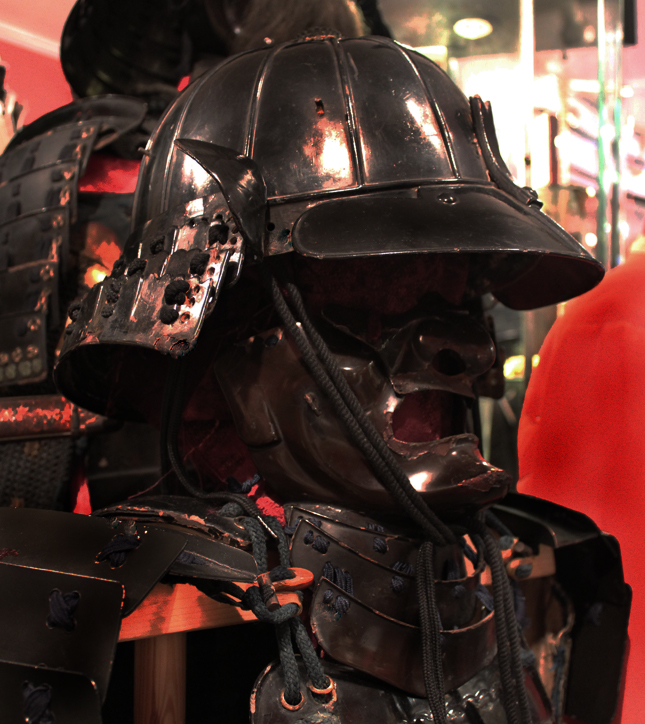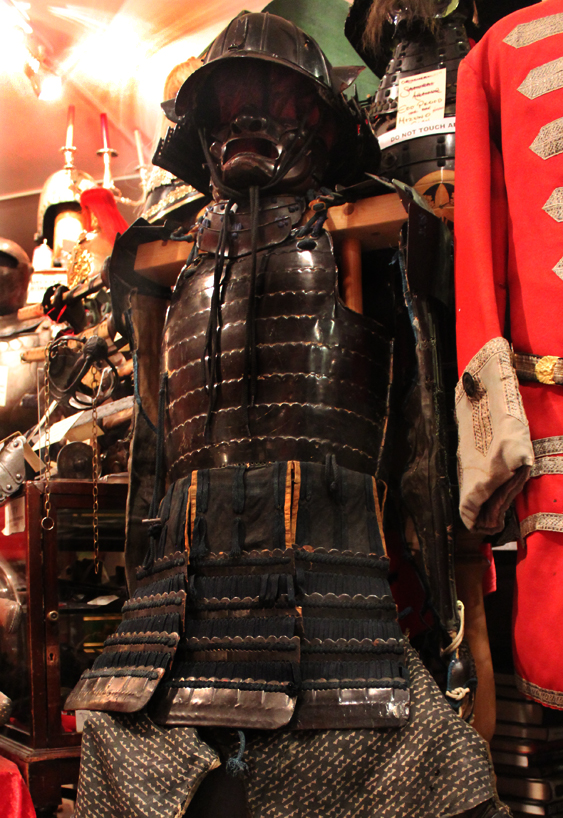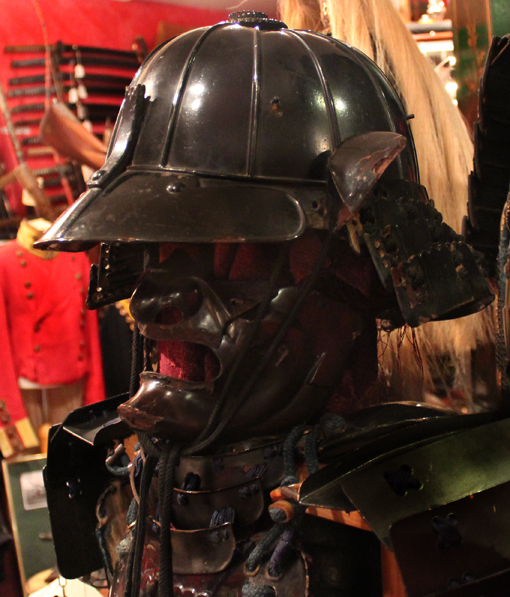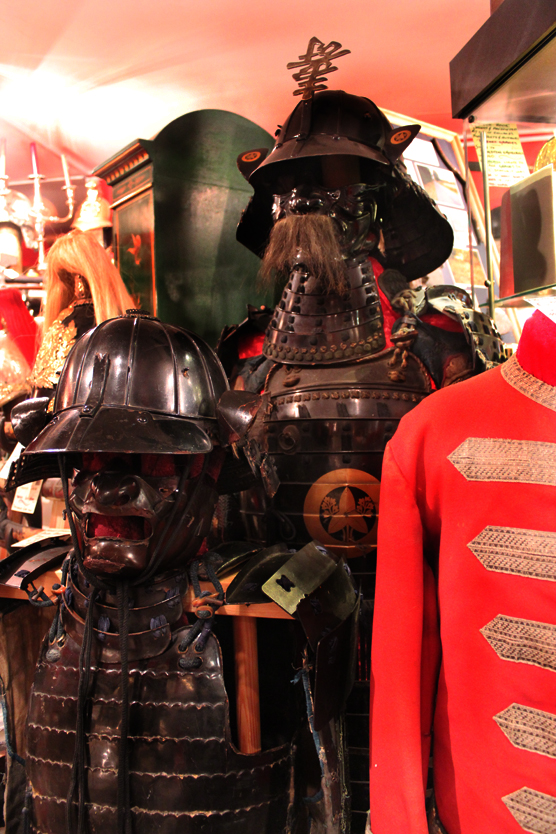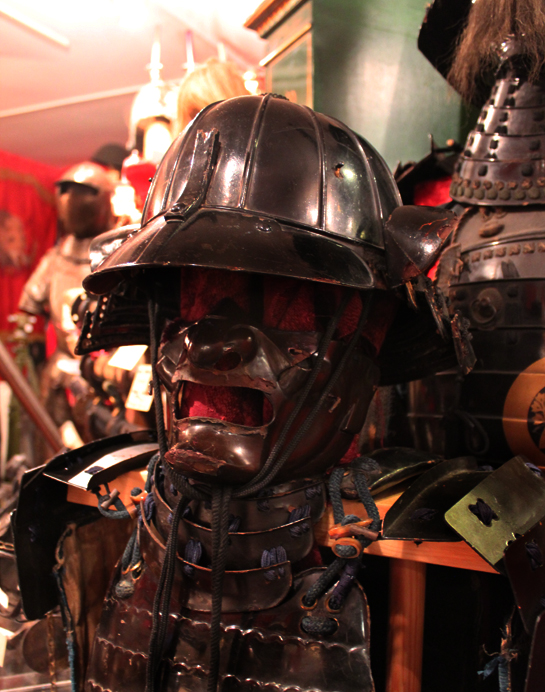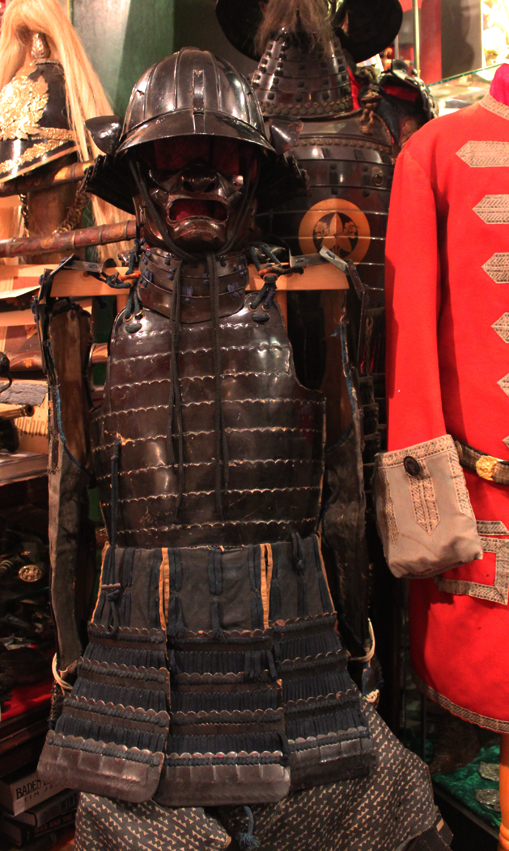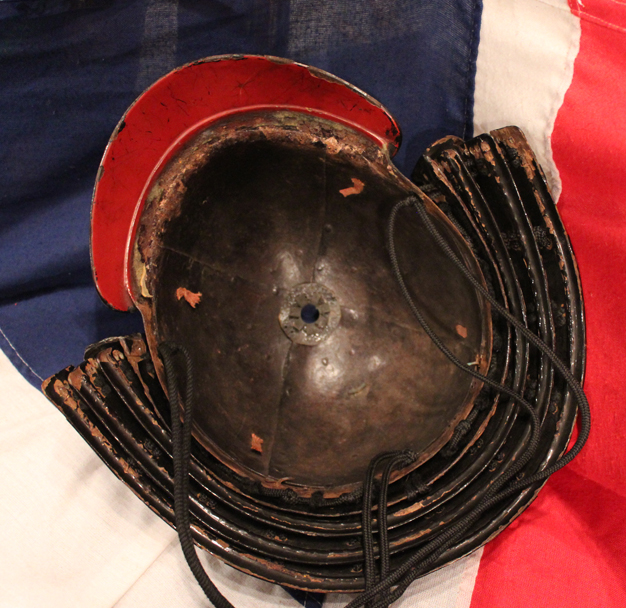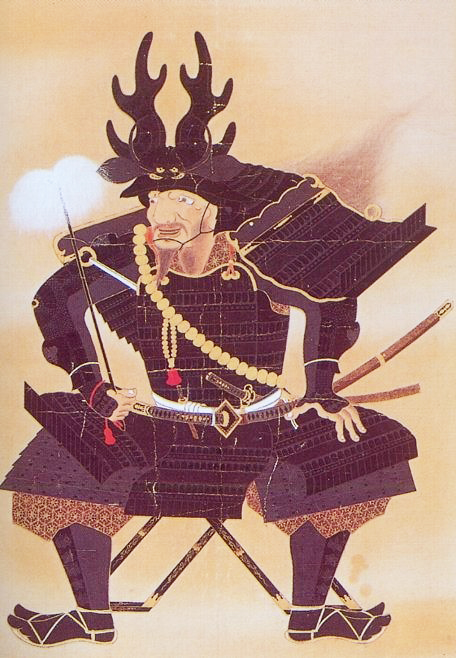A Beautiful Edo Period Original Samurai Armour, Gosuko Likely 17th Century and Used Into The 18th Century With 12 Plate Goshozan Suji Bachi Kabuto Helmet And A Super Ressai Fierce Full Face Armour Menpo And Clan Mon Tassets of The Honda Tadakatsu Clan
A superb early to mid Edo samurai yoroi, with the symbol in gold of deer antlers emblazoned on both haidate thigh protectors tassets, which would indicate a samurai of the clan of the great Honda Tadakatsu, a 17th century general and later daimyo serving under Tokugawa Iayesu, whose symbol was his famous deer antlers worn upon his kabuto helmet.
Deer antlers were seen as symbols of the messengers of the gods.
Honda Tadakatsu (本多 忠勝, March 17, 1548 – December 3, 1610), also called Honda Heihachirō (本多 平八郎) was a Japanese samurai, general, and daimyo of the late Sengoku through early Edo periods, who served Tokugawa Ieyasu. Honda Tadakatsu was one of the Tokugawa Four Heavenly Kings (Shitennō) along with Ii Naomasa, Sakakibara Yasumasa, and Sakai Tadatsugu.
It has a fine helmet kabuto of 12 plates, a 12 plate goshozan suji bachi kabuto. A helmet which is a multiple-plate type of Japanese helmet bowl with raised ridges or ribs showing where the 12 tate hagi-no-ita ( helmet plates) come together at the five-stage tehen kanamono finial, with the fukurin metal edges on each of the standing plates. The mabisashi peak lacquered and it has a four-tier lacquered iron hineno-jikoro neck-guard laced with dark blue. The interior shows four very ancient helmet plates rivetted together to form the interior support basis of the 12 plate skull. Unlined. With full face ressai menpo {the grimacing expression face armour} sets it off superbly with a most intimidating presence. When this was worn by its fierce-some armoured samurai, he must have looked spectacularly impressive. Dou or do, a chest armour made up of iron plates of various sizes and shapes with pendents
kusazuri made from iron or leather plates hanging from the front and back of the dou to protect the lower body and upper leg.
Sode, large modern rectangular shoulder protection made from iron and or leather plates.
Kote, armoured glove like sleeves which extended to the shoulder or han kote (kote gauntlets) which covered the forearms. Kote made from cloth covered with iron plates of various size and shape, connected by chain armor (kusari). Haidate, thigh guards which tied around the waist and covered the thighs. These were made from cloth with small iron and or leather plates of various size and shape, connected to each other by chain armour (kusari) and sewn to the cloth.
Suneate, shin guards made from iron splints connected together by chain armour (kusari) and sewn to cloth and tied around the calf.
The “deer-horn helmet” and deer horns, came henceforth, to be known as his symbol.
Tadakatsu’s helmet “Kazuno Wakidate Kabuto,” or Japanese armour (yoroi/kabuto), was a simple black helmet. His helmet is famous for its deer horn flanks. There are various theories as to why deer horns were used as the side of the helmet. When Yoshimoto Imagawa was shot in the Battle of Okehazama and Ieyasu’s army had to immediately return to Okazaki Castle, Tadakatsu found that the river was swollen, and he could not cross. At that moment, a deer appeared, and when he was watching the deer also trying to cross to the opposite bank, he found shallow water at a certain point and crossed the river. Thanks to this, the deer was able to return safely to Mikawa. Since then, Tadakatsu made up his mind to “protect Ieyasu-dono for the rest of his life like the deer did that one time,” and made a helmet out of the deer’s horns. Deers have also been cherished as messengers of the gods since ancient times. There are various theories as to why deers were regarded as messengers of the gods, but in mountainous Japan, the deer’s ability to run through steep mountains may have portrayed them as animals with mystical powers. In addition to his military prowess, Honda Tadakatsu was also attractive because of his large figure as a man, which is probably the reason why he is still popular today as a military commander who attracts many people
In the 16th century Japan began trading with Europe during what would become known as the Nanban trade. Samurai acquired European armour including the cuirass and comb morion which they modified and combined with domestic armour as it provided better protection from the newly introduced matchlock muskets known as Tanegashima. The introduction of the tanegashima by the Portuguese in 1543 changed the nature of warfare in Japan causing the Japanese armour makers to change the design of their armours from the centuries-old lamellar armours to plate armour constructed from iron and steel plates which was called tosei gusoku.
Bullet resistant armours were developed called tameshi gusoku or (bullet tested) allowing samurai to continue wearing their armour despite the use of firearms. This armour has areas of worn and naturally aged lacquer and areas of cloth/material that are perished due to it's great age and just as would be expected.
Complete with storage box unlidded
Code: 20251
9950.00 GBP



